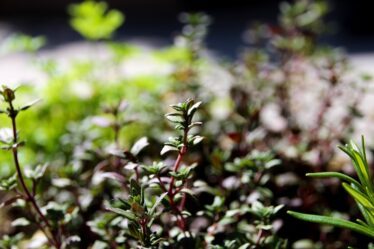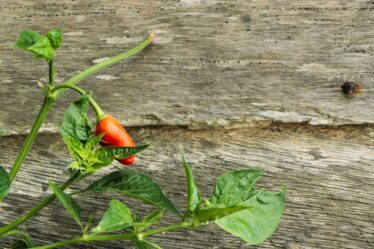
Ginger, scientifically known as Zingiber officinale, is a flowering plant that belongs to the Zingiberaceae family. It is native to Southeast Asia and has been used for centuries in traditional medicine and culinary practices. The history of ginger dates back over 5,000 years, with its origins believed to be in ancient China and India.
Ginger quickly spread throughout different cultures due to its medicinal properties and unique flavor. It was highly valued in ancient civilizations such as the Greeks, Romans, and Egyptians. The Greeks used ginger as a digestive aid, while the Romans used it as a spice and for its aphrodisiac properties. In ancient Egypt, ginger was considered a luxury item and was often used in religious ceremonies.
Key Takeaways
- Ginger has a long history and origin, dating back to ancient China and India.
- Ginger has numerous health benefits, including reducing inflammation, aiding digestion, and relieving nausea.
- Ginger can be used in cooking to add flavor and spice to dishes, and comes in various forms such as fresh, dried, ground, and candied.
- Ginger can be used in beverages such as tea, smoothies, and cocktails, as well as in baking recipes like cookies, cakes, and bread.
- Ginger is commonly used in Asian cuisine, particularly in stir-fries, curries, and noodle dishes.
Health Benefits of Ginger: A Natural Remedy for Various Ailments
One of the key health benefits of ginger is its anti-inflammatory properties. Ginger contains compounds called gingerols, which have been shown to reduce inflammation in the body. This makes ginger a natural remedy for conditions such as arthritis, muscle soreness, and menstrual pain.
Ginger is also well-known for its ability to alleviate nausea and vomiting. It has been used for centuries to treat motion sickness, morning sickness during pregnancy, and chemotherapy-induced nausea. The active compounds in ginger, particularly gingerols and shogaols, help to calm the stomach and reduce feelings of nausea.
In addition to its anti-inflammatory and anti-nausea properties, ginger may also have a positive impact on blood sugar levels and heart health. Some studies have shown that ginger can help lower blood sugar levels by increasing insulin sensitivity. This can be beneficial for individuals with diabetes or those at risk of developing the condition. Furthermore, ginger has been found to reduce cholesterol levels and improve blood circulation, which can help reduce the risk of heart disease.
Ginger in Cooking: Adding Flavor and Spice to Your Dishes
Fresh ginger is a versatile ingredient that can be used in a variety of dishes to add flavor and spice. To use fresh ginger, simply peel the skin using a vegetable peeler or the edge of a spoon, then grate or mince the ginger as desired. Fresh ginger can be added to stir-fries, soups, curries, and marinades to add a zesty and aromatic flavor.
Dried and ground ginger are also commonly used in cooking. Dried ginger has a more concentrated flavor compared to fresh ginger and is often used in baking recipes such as gingerbread cookies and cakes. Ground ginger can be used as a spice in both sweet and savory dishes, such as spice rubs for meat or adding a kick to hot beverages like chai tea.
Candied ginger is another popular form of ginger that is often used in desserts and baked goods. It is made by cooking fresh ginger in sugar syrup until it becomes tender and sweet. Candied ginger can be enjoyed on its own as a sweet treat or chopped up and added to cookies, cakes, and muffins for a burst of flavor.
Types of Ginger: Fresh, Dried, Ground, and Candied
| Type of Ginger | Description | Uses |
|---|---|---|
| Fresh Ginger | Unpeeled, light brown skin with yellow flesh inside | Used in cooking, tea, and as a natural remedy for nausea and inflammation |
| Dried Ginger | Dehydrated fresh ginger with a darker color and stronger flavor | Used in baking, spice blends, and as a natural remedy for digestive issues |
| Ground Ginger | Dried ginger that has been ground into a fine powder | Used in baking, spice blends, and as a natural remedy for digestive issues |
| Candied Ginger | Fresh ginger that has been cooked in sugar syrup and coated in sugar crystals | Used as a snack, in baking, and as a natural remedy for nausea and motion sickness |
Fresh ginger is the most common form of ginger used in cooking. It has a pungent and spicy flavor that adds depth to dishes. When purchasing fresh ginger, look for firm roots with smooth skin. Avoid any roots that are wrinkled or have soft spots.
To store fresh ginger, keep it in the refrigerator in a paper towel or plastic bag. This will help to keep it fresh for up to three weeks. Alternatively, you can freeze fresh ginger by peeling and grating it, then placing it in an airtight container or freezer bag. Frozen ginger can be grated directly into recipes without the need for thawing.
Dried ginger is made by drying fresh ginger root until it becomes hard and brittle. It has a more concentrated flavor compared to fresh ginger and is often used in baking recipes. Dried ginger can be stored in an airtight container in a cool, dark place for up to six months.
Ground ginger is made by grinding dried ginger into a fine powder. It is commonly used as a spice in both sweet and savory dishes. Ground ginger should be stored in an airtight container in a cool, dark place to maintain its flavor and potency.
Candied ginger, also known as crystallized ginger, is made by cooking fresh ginger in sugar syrup until it becomes tender and sweet. It is often used as a topping for desserts or chopped up and added to baked goods for a burst of flavor. Candied ginger should be stored in an airtight container at room temperature.
Ginger in Beverages: Making Tea, Smoothies, and Cocktails
Ginger tea is a popular beverage that can be enjoyed hot or cold. To make ginger tea, simply peel and slice fresh ginger, then steep it in hot water for about 10 minutes. You can add honey or lemon juice to enhance the flavor if desired. Ginger tea is known for its soothing properties and can help alleviate digestive issues and promote relaxation.
Adding ginger to smoothies can give them a spicy kick and provide additional health benefits. Simply peel and grate fresh ginger, then add it to your favorite smoothie recipe. Ginger pairs well with fruits such as pineapple, mango, and orange.
Ginger can also be used to add a unique flavor profile to cocktails. Muddle fresh ginger with other ingredients such as mint leaves or citrus fruits to create refreshing and flavorful cocktails. Ginger can also be used to make homemade ginger beer, which is a key ingredient in classic cocktails like the Moscow Mule.
Ginger in Baking: Cookies, Cakes, and Bread Recipes

Ginger is a popular ingredient in baking, particularly in cookies, cakes, and bread recipes. Gingerbread cookies are a classic holiday treat that are made with a combination of ground ginger, cinnamon, nutmeg, and cloves. These cookies have a warm and spicy flavor that pairs well with a cup of hot tea or coffee.
In addition to gingerbread cookies, ginger can be added to cake and bread recipes to add a unique flavor. Fresh or ground ginger can be added to carrot cake, banana bread, or spice cake for an extra kick. The spicy flavor of ginger complements the sweetness of these baked goods and adds depth to the overall flavor profile.
To make a ginger glaze for baked goods, simply combine powdered sugar with freshly grated ginger and a small amount of water or lemon juice. Drizzle the glaze over cakes, cookies, or muffins for a tangy and sweet finishing touch.
Ginger in Asian Cuisine: Stir-Fries, Curries, and Noodle Dishes
Ginger is a staple ingredient in Asian cuisine and is used in a variety of dishes such as stir-fries, curries, and noodle dishes. In Chinese cuisine, ginger is often used to add flavor to stir-fried vegetables and meats. It is typically sliced or minced and added to the dish at the beginning of the cooking process to infuse the flavors.
In Thai cuisine, ginger is commonly used in curries such as green curry and red curry. It adds a spicy and aromatic flavor to the dish. Ginger can also be used in noodle dishes such as pad Thai or Singapore noodles to add a zesty kick.
Japanese cuisine also incorporates ginger in various dishes. Pickled ginger, also known as gari, is often served alongside sushi to cleanse the palate between bites. Ginger is also used in marinades for grilled meats such as yakitori or teriyaki.
Pairing Ginger with Other Ingredients: Garlic, Soy Sauce, and Lemon
Ginger pairs well with a variety of other ingredients to create flavorful and delicious dishes. One classic combination is ginger and garlic. The spicy and pungent flavors of ginger and garlic complement each other and create a savory and aromatic dish. This combination is often used in stir-fries, marinades, and sauces.
Another popular pairing is ginger and soy sauce. The salty and umami flavors of soy sauce balance out the spiciness of ginger, creating a well-rounded and flavorful dish. This combination is commonly used in Asian stir-fries, noodle dishes, and marinades.
Ginger also pairs well with lemon to create a tangy and refreshing taste. The citrusy flavor of lemon complements the spiciness of ginger and adds brightness to dishes. This combination is often used in salad dressings, marinades for seafood, and desserts such as lemon ginger cookies.
Growing and Storing Ginger: Tips and Tricks for Home Gardeners
Growing ginger at home is relatively easy and can be done in both indoor and outdoor settings. To grow ginger, start by purchasing fresh ginger root from a grocery store or nursery. Look for roots that have small buds or “eyes” on them.
To plant ginger, fill a pot or container with well-draining soil. Place the ginger root horizontally in the soil with the buds facing up, then cover it with about an inch of soil. Water the soil lightly to keep it moist but not soggy.
Ginger plants prefer warm and humid conditions, so place the pot in a sunny spot or near a window where it can receive indirect sunlight. Keep the soil consistently moist by watering it regularly.
After a few weeks, you should start to see shoots emerging from the soil. These shoots will eventually grow into leafy stems. Ginger plants take about 8-10 months to mature, so be patient with the growing process.
To harvest ginger, wait until the leaves start to turn yellow and die back. This is a sign that the ginger is ready to be harvested. Gently dig up the ginger root using a garden fork or your hands, being careful not to damage the roots.
To store fresh ginger, keep it in the refrigerator in a paper towel or plastic bag. This will help to keep it fresh for up to three weeks. Alternatively, you can freeze fresh ginger by peeling and grating it, then placing it in an airtight container or freezer bag. Frozen ginger can be grated directly into recipes without the need for thawing.
Embracing Ginger as a Versatile and Delicious Ingredient
In conclusion, ginger is a versatile and delicious ingredient that has a rich history and a wide range of health benefits. It has been used for centuries in traditional medicine and culinary practices, and its popularity continues to grow.
Ginger’s anti-inflammatory properties make it a natural remedy for various ailments such as arthritis and muscle soreness. It is also known for its ability to alleviate nausea and vomiting, making it a popular choice for individuals experiencing motion sickness or morning sickness during pregnancy.
In the culinary world, ginger adds flavor and spice to a variety of dishes. Fresh ginger can be used in stir-fries, soups, curries, and marinades, while dried and ground ginger are commonly used in baking recipes. Candied ginger is often added to desserts and baked goods for a burst of flavor.
Ginger can also be enjoyed in beverages such as tea, smoothies, and cocktails. It pairs well with other ingredients such as garlic, soy sauce, and lemon to create savory and tangy dishes.
Whether you’re using ginger for its health benefits or its culinary uses, there’s no denying that this humble root has a lot to offer. So why not embrace ginger in your cooking and explore the many ways it can enhance your meals? From its rich history to its versatile nature, ginger is truly a remarkable ingredient that deserves a place in every kitchen.
If you’re a fan of the unique and invigorating flavor of ginger, you’ll love this article on Flavorful Sips that explores the versatility of ginger in various recipes. From cocktails to desserts, ginger adds a delightful kick to any dish. If you’re looking for more culinary inspiration, check out their article on mastering the art of making blue cheese burgers here.



